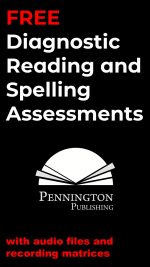2018 Top 10 Quotes
Teachers… How well do you and your students know American culture? Current events? It’s quiz time!
For the last 13 years, Yale Law School librarian Shapiro adds 10 of the most popular and influential American quotes of the year to his collection of more than 12,000 well-known quotations by famous personalities, living or dead featured in his 2006 book, “The Yale Book of Quotations,” a collection of more than 12,000 well-known quotations by famous personalities, living or dead.
Let’s play a simple match game. I’ll provide the quote and the matching options. Now, not all matches will be quote to quoter; some of the matches will match quote to quotee, because some of the 2018 Top Quotes are about someone. You’ll understand as you make your guesses. Answers at bottom, so don’t scroll too far.
I read the Washington Post article, written by Kristine Phillips, who details the complete list, as published Tuesday by the Associated Press:
- “Truth isn’t truth.”
- “I liked beer. I still like beer.”
- “While all pharmaceutical treatments have side effects, racism is not a known side effect of any Sanofi medication.” — Sanofi drug company, in a tweet responding to this celeb’s blaming its product Ambien in a tweet.
- “We gather to mourn the passing of American greatness, the real thing, not cheap rhetoric from men who will never come near the sacrifice he gave so willingly, nor the opportunistic appropriation of those that live lives of comfort and privilege while he suffered and served.”
- “We’re children. You guys, like, are the adults. You need to take some action and play a role. Work together, come over your politics and get something done.”
- ”[I am] not smart, but genius . . . and a very stable genius at that!”
- “You don’t have to agree with Trump but the mob can’t make me not love him. We are both dragon energy. He is my brother. I love everyone.”
- “Our country is led by those who will lie about anything, backed by those who will believe anything, based on information from media sources that will say anything.”
- “I have just signed your death warrant.”
- “If you see anybody from that Cabinet in a restaurant, in a department store, at a gasoline station, you get out and you create a crowd! And you push back on them. And you tell them they’re not welcome anymore, anywhere.”
Elise Viebeck contributed to this article.
BONUS: Who said last year’s top quote: “alternative facts”?
NEED SOME HINTS?
TOP ROW: John McCain, Donald Trump, Larry Nassar, Brett Kavanaugh, David Hogg
BOTTOM ROW: Rudy Giuliani, Kanye West, Roseanne Barr, James Comey, Maxine Waters
*****
ANSWERS
- “Truth isn’t truth.” — Rudolph W. Giuliani, interview on “Meet the Press,” Aug. 19.
- “I liked beer. I still like beer.” — Brett M. Kavanaugh, U.S. Senate Judiciary Committee testimony on his Supreme Court nomination, Sept. 27.
- “While all pharmaceutical treatments have side effects, racism is not a known side effect of any Sanofi medication.” — Sanofi drug company, in a tweet responding to Roseanne Barr’s blaming of its product Ambien in explaining a tweet that led ABC to cancel her show, May 30.
- “We gather to mourn the passing of American greatness, the real thing, not cheap rhetoric from men who will never come near the sacrifice he gave so willingly, nor the opportunistic appropriation of those that live lives of comfort and privilege while he suffered and served.” — Meghan McCain, daughter of Sen. John McCain in a eulogy for her father, Sept. 1.
- “We’re children. You guys, like, are the adults. You need to take some action and play a role. Work together, come over your politics and get something done.” — David Hogg, a survivor of the Parkland, Fla., school shooting, in a CNN interview, Feb. 15.
- ”[I am] not smart, but genius . . . and a very stable genius at that!” — President Trump, in a tweet, Jan. 6.
- “You don’t have to agree with Trump but the mob can’t make me not love him. We are both dragon energy. He is my brother. I love everyone.” — Kanye West, in a tweet, April 25.
- “Our country is led by those who will lie about anything, backed by those who will believe anything, based on information from media sources that will say anything.” — Former FBI director James B. Comey, in a tweet, May 23.
- “I have just signed your death warrant.” — Judge Rosemarie Aquilina, addressing former USA Gymnastics doctor Larry Nassar upon sentencing him to up to 175 years in prison for sexual assault, Jan. 24.
- “If you see anybody from that Cabinet in a restaurant, in a department store, at a gasoline station, you get out and you create a crowd! And you push back on them. And you tell them they’re not welcome anymore, anywhere.” — Rep. Maxine Waters (D-Calif.), in remarks at a rally in Los Angeles, June 23.
BONUS: Kellyanne Conway
*****
The Pennington Publishing Blog is authored by Mark Pennington, English-language arts teacher and reading specialist. Mark’s assessment-based curriculum is featured at https://penningtonpublishing.com/. Each informative article (over 700) includes links and a teaching freebie. Here are three to choose from. Happy New Year! Let’s hope next year’s quotes are more hopeful and positive.
Get the 25 Greek and Latin Power Words FREE Resource:
![]()
Get the Simple Sentence Diagramming FREE Resource:
![]()
Get the SCRIP Comprehension Strategies FREE Resource:
![]()
Grammar/Mechanics, Reading, Spelling/Vocabulary, Study Skills, Writing















